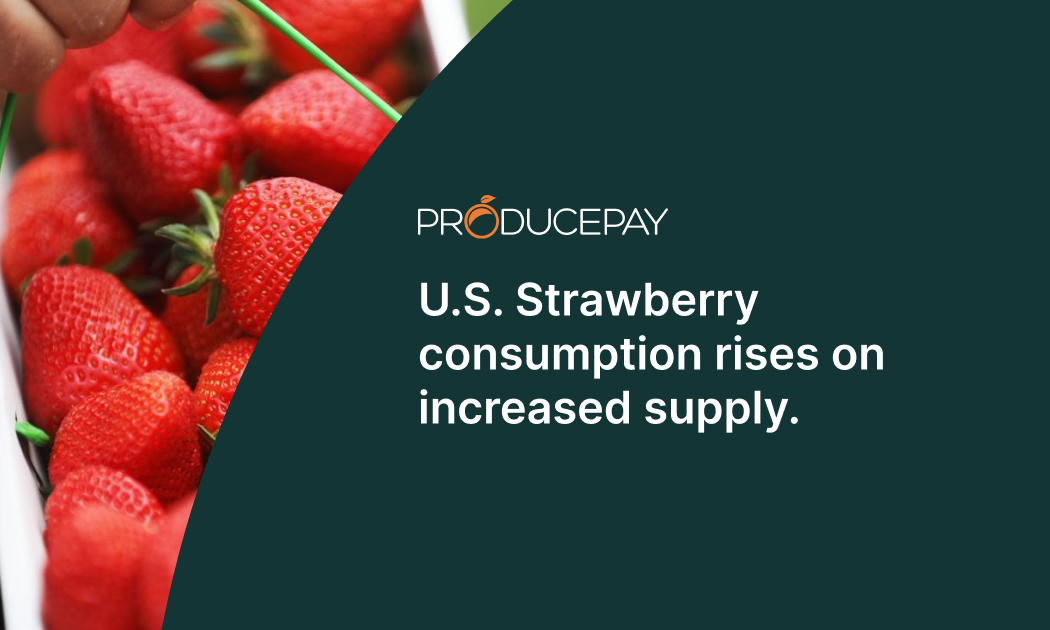
U.S. Strawberry consumption rises on increased supply.
United States strawberry consumption continues to grow, driven by increased domestic production and imports of this delicious berry.
According to USDA data, strawberry consumption has steadily grown in recent years. From 2016 to 2021, per capita retail availability of strawberries increased from 5.3 to 6.6 pounds, indicating an apparent increase in demand.
Strawberry numbers in the U.S.
One of the driving forces behind this surge in consumption is the growth of domestic strawberry production. In the five years between 2016 and 2021, domestic production increased by 23%, from 802,858 metric tons to 984,295 metric tons.
However, the growth in strawberry imports has been even more significant. Over the past two decades, imports have soared by 43%, reaching 236,321 metric tons in 2021 compared to 165,561 metric tons in 2016. Imports accounted for 19% of the total U.S. strawberry supply in 2021, compared to 17% in 2016 and only 7% in 2000.
Mexico leads U.S. imports
The year-round availability of Mexican strawberries and geographic proximity has allowed Mexico to dominate the import market.
In 2022, the months with the highest import volumes were March, February, and January, making up 51% of total annual imports. It’s worth noting that the lowest shipments were recorded in August and September, although July and October also saw relatively fewer imports.
Sources: The Packer, USDA-AMS
Canada, Turkey, Peru and Costa Rica also exported strawberries to the U.S. in 2022, but their volumes were minimal compared to the imports from Mexico.
